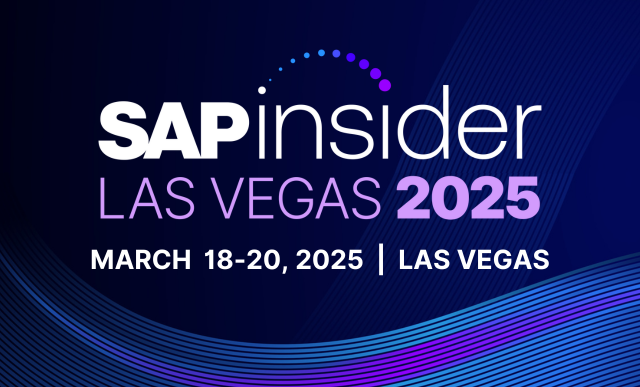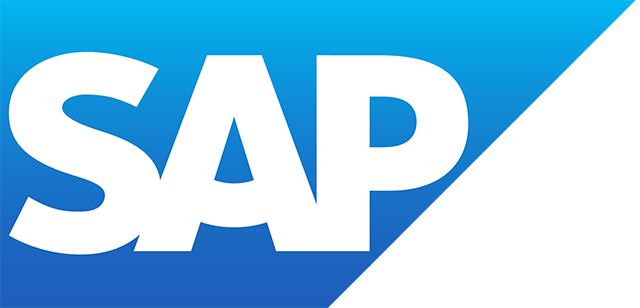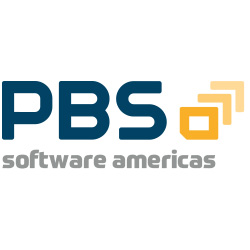SAP Data Governance
Filter By
Browse By
- SAP Analytics and AI
- SAP Application Development and Integration
- All SAP Application Development and Integration
- SAP ABAP
- SAP ABAP Development Tools
- SAP ABAP Test Cockpit
- SAP API Management
- SAP BAPI
- SAP Basis
- SAP BRF
- SAP Business Application Studio
- SAP CMS
- SAP Design Studio
- SAP Development Tools
- SAP DevOps
- SAP EAI
- SAP EDI
- SAP Extension Suite
- SAP Fiori
- SAP Fiori Elements
- SAP Integration Suite
- SAP Low Code Application Development
- SAP Low Code Automation
- SAP Netweaver
- SAP Release Management
- SAP UI5
- SAP Web Application Server
- SAP Web IDE
- SAP Business Process Management
- SAP Center of Excellence
- SAP CIO
- SAP Customer Experience
- SAP Data and Data Management
- All SAP Data and Data Management
- SAP BW
- SAP BW/4HANA
- SAP Crystal Reporting
- SAP Data Archiving
- SAP Data Center
- SAP Data Governance
- SAP Data Integration
- SAP Data Migration
- SAP Data Quality
- SAP Data Services
- SAP Data Strategy
- SAP Data Visualization
- SAP Data Warehouse Cloud
- SAP DMS
- SAP Document Control
- SAP EIM
- SAP ETL
- SAP ETL Tools
- SAP HANA
- SAP HANA Administration
- SAP HANA Deployment Infrastructure
- SAP HANA Studio
- SAP Master Data
- SAP Master Data Governance
- SAP MDM
- SAP Enterprise Architect
- SAP Enterprise Asset Management
- SAP ERP
- SAP Finance
- All SAP Finance
- SAP Accounting
- SAP AR AP
- SAP Asset Accounting
- SAP Billing Systems
- SAP BPC
- SAP BRIM
- SAP Cash Management
- SAP Central Finance
- SAP Controlling
- SAP COPA
- SAP Cost Center Accounting
- SAP e-invoicing
- SAP FICO
- SAP Finance Automation
- SAP Financial Closing Cockpit
- SAP Financial Consolidation
- SAP Financial Planning
- SAP FX Risk
- SAP General Ledger
- SAP Global Tax Management
- SAP Hyperion
- SAP Order to Cash
- SAP Payment Processing
- SAP Profitability Analysis
- SAP Rebate Management
- SAP S/4HANA Finance
- SAP Universal Journal
- SAP Governance Risk and Compliance
- SAP Human Capital Management
- SAP Intelligent Technologies
- SAP Platform and Technology
- All SAP Platform and Technology
- SAP Business Technology Platform
- SAP Cloud Connector
- SAP Cloud Integration Platform
- SAP Cloud Migration
- SAP Cloud Platform
- SAP Cloud Providers
- SAP Cloud Strategy
- SAP Container Platform
- SAP Digital Asset Management
- SAP Digital Integration Hub
- SAP Digital Signature
- SAP HANA Enterprise Cloud
- SAP HEC
- SAP Hyperscalers
- SAP Infrastructure
- SAP Messaging
- SAP Smart Forms
- SAP Quality and Testing
- SAP Security
- SAP Spend Management
- SAP Supply Chain Management
- All SAP Supply Chain Management
- SAP APO
- SAP Asset Management
- SAP Business Network
- SAP Digital Manufacturing Cloud
- SAP Digital Twin
- SAP EWM
- SAP IBP
- SAP Inventory Management
- SAP Label Printing
- SAP Logistics
- SAP Manufacturing
- SAP Manufacturing Automation
- SAP MES
- SAP MII
- SAP MM
- SAP MRO
- SAP MRP
- SAP Order Management
- SAP Plant Maintenance
- SAP PLM
- SAP Production Planning
- SAP S&OP
- SAP SD
- SAP SPM
- SAP Supply Chain Planning
- SAP Track and Trace
- SAP Transportation Management
- SAP System Administration
Data Governance: An Overview and Key Considerations
What Is Data Governance?
SAP data can deliver innovation, drive user experience, and provide competitive advantage. The process of marrying SAP data with non-SAP data from different systems — from Internet of Things devices to the back office to an organization’s web systems — is defining data culture around the world.
Simply combining data, however, is not enough. Proper management is essential to realizing its value.
Data governance is considered a core component of an effective data management strategy. Data governance can ensure that data is consistent, accurate, and protected.
The Data Governance Institute (DGI) defines data governance as “a system of decision rights and accountabilities for information-related processes, executed according to agreed-upon models which describe who can take what actions with what information, and when, under what circumstances, using what methods.” (Read the DGI’s 10 rules of engagement.)
Data Governance: An Overview and Key Considerations
What Is Data Governance?
SAP data can deliver innovation, drive user experience, and provide competitive advantage. The process of marrying SAP data with non-SAP data from different systems — from Internet of Things devices to the back office to an organization’s web systems — is defining data culture around the world.
Simply combining data, however, is not enough. Proper management is essential to realizing its value.
Data governance is considered a core component of an effective data management strategy. Data governance can ensure that data is consistent, accurate, and protected.
The Data Governance Institute (DGI) defines data governance as “a system of decision rights and accountabilities for information-related processes, executed according to agreed-upon models which describe who can take what actions with what information, and when, under what circumstances, using what methods.” (Read the DGI’s 10 rules of engagement.)
Key Considerations for SAPinsiders
The following steps can help you implement effective data governance:
- Create a strong business case for data governance. According to SAP partner Winshuttle, you need to be able to clearly communicate the value of your data to gain support from leadership. Winshuttle’s Winshuttle Foundation and Winshuttle Studio offer data management capabilities. According to the vendor, your data should be maintained through a data governance program that can ensure data quality and proper management, while complying with regulations to keep the data safe and effective.
- Increase revenue potential with a strong data governance foundation. Consider the approach of Breakthru Beverage Group. On a mission to become a fully integrated, data-driven business, the company first built a foundation with its data governance program. The initiative to cleanse and conform its material, vendor, and customer data was supported by SAP partner Protiviti, and resulted in a scorecard on data cleanliness as well as a downstream benefit: revenue generation, by enabling the business to more quickly activate products and more accurately report on them. Read the full data story.
- Set the stage for standardization and automation capabilities. In 2016, we wrote about Keurig Green Mountain’s approach to data governance. In response to meteoric growth and a growing love of the single-cup brew, the company undertook an ambitious data governance project. It transitioned from a data maintenance to a data governance organization. At the time, Keurig’s Director of Master Data Management Business Process Eileen Hanafin said its data governance initiative set the company up for future standardization and automation capabilities with a focus on continuous improvement.
895 results
-

- SAP EIM
 Premium
Premium
Data Management Tools in SAP EIM Portfolio – Part 2
Reading time: 4 mins
SAP Data Services is an enterprise-grade software suite facilitating seamless data integration, migration, warehousing, and quality management. It efficiently extracts, transforms, and loads data from diverse sources into a centralized hub for analysis and reporting, ensuring data consistency and precision across systems. This empowers businesses to derive insights from reliable data, aiding informed decision-making. In…
-

 Premium
Premium
Getting Started with SAP BusinessObjects Data Migration to an SAP CRM System
Reading time: 14 mins
Data migration is a major task, and crucial for a successful SAP CRM implementation. Learn about using SAP BusinessObjects Data Migration to move your data into SAP CRM, ensuring that it can be trusted by users and is ready for business process execution. Key Concept Enterprise Information Management (EIM) is the discipline of managing, governing,...…
-

Why Trusted Data is the Linchpin of ERP Modernization
Reading time: 9 mins
As businesses grow and evolve, it can be challenging to manage the complex data landscape with a traditional ERP system in place. The data generated by day-to-day business operations has exponentially increased over recent years.
-
-

- SAP Business Suite
 Premium
Premium
SAP Data Services Part 1: Integrating with SAP Business Suite Sources
Reading time: 15 mins
Gain an overview of SAP Data Services and how to extract data by leveraging SAP Business Suite extractors. Key Concept SAP Data Services can integrate with the SAP Business Suite to transport data by using extractors that streamline the extraction, transformation, and loading (ETL) process for this type of deployment. SAP Data Services (formerly SAP...…
-

 Premium
Premium
Part 2: Data Modeling Strategies to Avoid Data Inaccuracy and Ensure Consistency
Reading time: 38 mins
Overcome the challenge of retaining the original master data attribute validity from when transactions occurred. Key Concept Developers only tend to use time-dependent master data attributes when a source system provides them as time dependent. However, SAP NetWeaver BI can also record time-independent master data from a source system as time dependent. This can greatly...…
-

SAP Data Services: Integrating with SAP Business Suite Sources
Reading time: 28 mins
Gain an overview of SAP Data Services and how to extract data by leveraging SAP Business Suite extractors. Membership Required You must be a member to access this content.View Membership LevelsAlready a member? Log in here
-

5 Reasons Data Governance Is Critical to SAP Modernization
Reading time: 5 mins
Moving your SAP ERP systems to the cloud is not easy. It may be one of the most significant technological interventions that your company may undertake. However, for many companies, SAP modernization is inevitable. The traditional, on-premises systems that have been crucial for their business are becoming outdated compared to modern cloud-based systems, making it…
-
-

Navigating the Data Governance Journey: Linking Business Goals and Success
Reading time: 3 mins
Embarking on a data governance journey commonly starts with a strong sense of excitement, but it can result in frustration if not carefully aligned with significant business goals. The story of a typical data governance initiative often involves initial inquiries and disengagement.
-

Criticality of Data Management & Process Automation in SAP Ecosystem
Reading time: 7 mins
by Kumar Singh, Research Director, Automation & Analytics, Supply Chain Management, SAPinsider Taming the complexity of SAP Business Process Management There is no doubt that SAP technologies, whether it is SAP ECC or S/4HANA ERP or other SAP products, are complex systems. If you are familiar with SAP ERP systems, you know the complexities of…
-

 Premium
Premium
7 Tips to Heed for Successful Mobile BI Data Governance
Reading time: 7 mins
/MobileGet a helpful, seven-point checklist on how to prepare your environment for data governance of mobile BI. Key Concept A zombie application is an uncontrolled and forgotten mobile app that, if left on its own, can continue to consume data and create data management problems while often existing outside of data governance structures. You need...…
Featured Insiders
-

Steve Biskie
Principal, RSM US LLP
-

Aric Quinones
Managing Director, Protiviti
-

Shashank Paritala
Avvale
Become a Member
Unlimited access to thousands of resources for SAP-specific expertise that can only be found here.
Become a Partner
Access exclusive SAP insights, expert marketing strategies, and high-value services including research reports, webinars, and buyers' guides, all designed to boost your campaign ROI by up to 50% within the SAP ecosystem.
Upcoming Events
Related Vendors
Your request has been successfully sent


